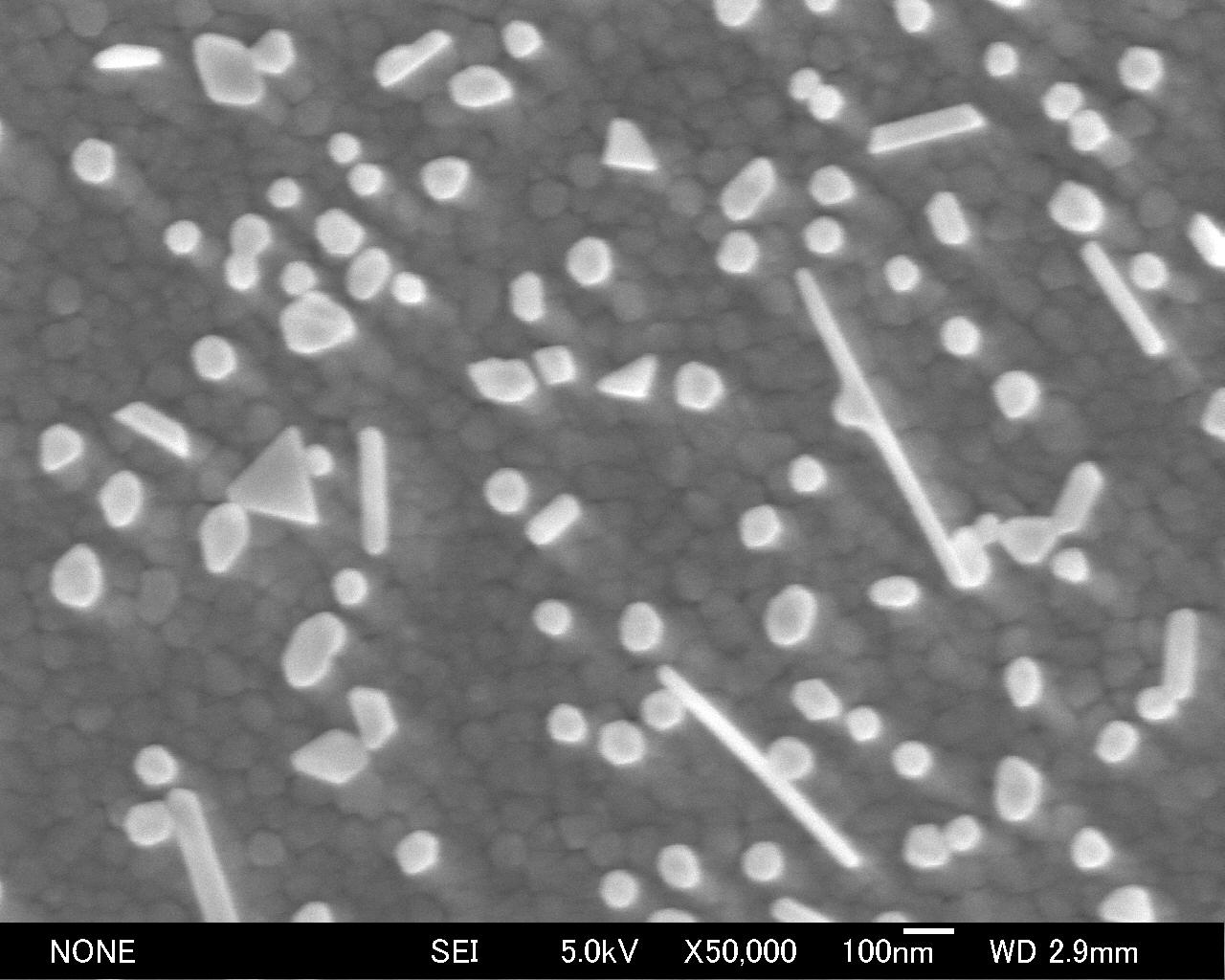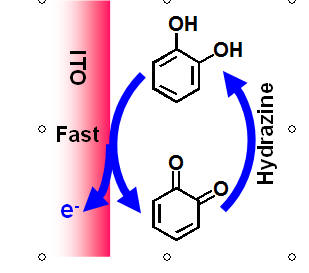Research Highlights
|
Carboxylate functionalized AuNP: One step Chemical preparation
Gold Bull 47 (2014) 127-132 |
Electrooxidation of Hydrazine
Talanta 115 ((2013) 214-221 |
|
Electrochemical micropatterning of CNT
Chemical Communications (2008) 826-828 |
Immunosensor fabrication
Chemical Communications (2007) 2610-2612 |
|
Achieving low surface coverage of AuNP
Chemical Communications (2008) 4607-4609 |
|
|
Seed-mediated growth of AuNP on ITO
|
EC reaction for signal amplification
Electroanalysis, 19 (2007)1543-1546 |
Research Experience
1. Synthesis of Au Nanoparticle (Au NP), Pt NP, Pd NP, Ag NP, Pt/Pd
bimetallic NP, Au core@catechol-tris shell NPs, Pt NP-attached
carbon nanotubes in solution:
(a) Finding novel and simplest routes for the preparation of stable
and functionalized nanomaterials
(b) Seed mediating growth of nanomaterials
2. Electrode modification with nanomaterials (carbon nanotubes, Au
NP, Pt NP, Pd NP, AgNP, Pt/Pd bimetallic NP, Pt NP-attached carbon
nanotubes, IrOx NPs, Cu NPs)
(a) Used electrodes for modification: Indium tin oxide (ITO),
Fluorine-doped tin oxide (FTO), Gallium-doped zinc oxide (GZO),
Aluminum-doped zinc oxide (AZO), Glassy carbon (GC), Graphite pencil
electrode (GPE)
(b) Direct chemical preparation and characterization of porous or
normal nanomaterials on bare or modified electrode
(c) Direct electrochemical preparation of nanostructured materials
on electrode.
(d) Size and shape controlled growth of Au nanomaterials on solid
substrate.
(e) Modification of electrode surfaces with post-synthesis
nanomaterials such as carbon nanotubes, Au NPs , Pt NPs, Pd NPs,
IrOx NPs or hybrid nanomaterials to use as working electrode or
reference electrode.
3. Micropatterning of nanomaterials or biomolecules
4. Preparation of carbon paste electrode
5. Electrochemical sensor fabrication using bare or nanomaterials-modified
electrode for detection of environmental hazard materials like
hydroquinone, catechol, hydrazine, hydrogen peroxide, Arsenic,
Cadmium, Lead, Zinc etc.
6. Biosensor fabrication using bare or nanomaterials-modified
electrode
(a) Immobilization of biomolecules
(b) Finding good enzymatic substrate and product couple for the bare
or nanomaterials-modified electrode to fabricate enzyme-based highly
sensitive electrochemical biosensor.
(c) Fabrication of electrochemical biosensor using nanomaterials-modified
micropatterned electrodes and microfluidic devices.
(d) Finding good redox cycling agents (e.g. NaBH4 or hydrazine) for
signal amplification during the electrochemical oxidation/reduction
by chemically reduction/oxidation simultaneously to get low
detection limit in chemical or bio-sensors.
7. Fabrication electrochemical immunosensor based on magnetic bead
and graphite pencil electrode or screen printed graphene electrode
8. Application of nanomaterials-modified electrode as reference
electrode
9. Application of nonmaterial-modified electrodes in fuel cell area.
10. Drugs synthesis in laboratory scale and commercial scale.
11. Effluents treatment in laboratory scale and commercial scale.
12. Extraction and separation of different organic molecules from
different plants and their structure elucidation using modern
spectroscopic techniques.






